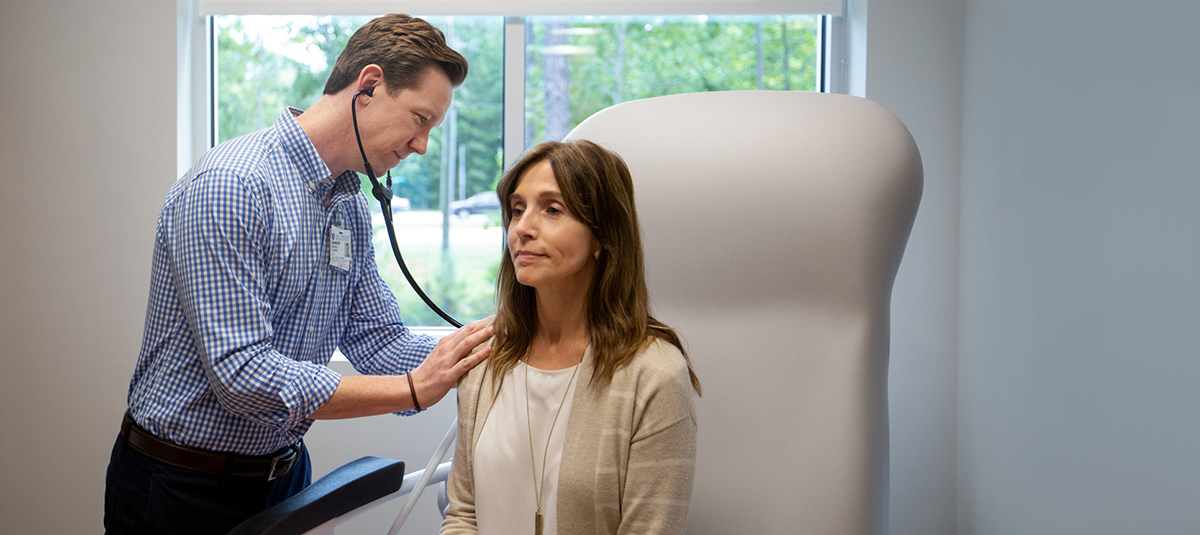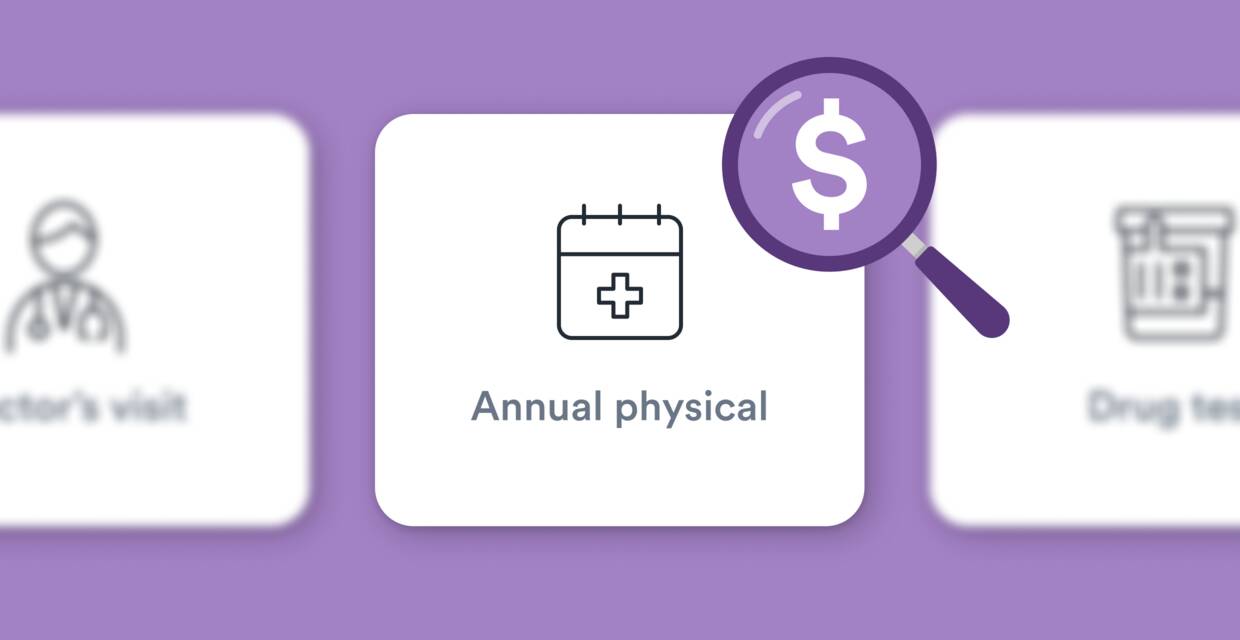Home>Finance>How Much Does An Annual Physical Cost Without Insurance


Finance
How Much Does An Annual Physical Cost Without Insurance
Modified: December 29, 2023
Find out the financial impact of getting an annual physical without insurance. Plan ahead for potential costs and alternatives to manage your finances effectively.
(Many of the links in this article redirect to a specific reviewed product. Your purchase of these products through affiliate links helps to generate commission for LiveWell, at no extra cost. Learn more)
Table of Contents
Introduction
Annual physicals play a crucial role in maintaining good health and preventing potential health issues. These comprehensive check-ups allow healthcare professionals to evaluate your overall well-being and identify any underlying health conditions at an early stage. However, the cost of an annual physical can be a concern, especially for those without insurance coverage. In this article, we will explore how much an annual physical can cost without insurance and discuss lower-cost options and financial assistance that may be available.
Regular check-ups are vital for everyone, regardless of age or health condition. They provide an opportunity for healthcare providers to monitor your health status, assess potential risk factors, and recommend appropriate preventive measures. By proactively addressing any underlying health issues, annual physicals can help you maintain a healthy lifestyle and minimize the risk of developing chronic diseases.
Unfortunately, not everyone has insurance coverage that includes annual physicals, which can sometimes deter individuals from seeking this essential healthcare service. However, it’s important to remember that there are still options available for those without insurance to access annual physicals at affordable rates.
In the following sections, we will delve into the factors that can affect the cost of an annual physical without insurance, explore the average expenses associated with these check-ups, and discuss alternatives that can help reduce the financial burden. Additionally, we will explore options for seeking financial assistance to cover the cost of annual physicals, ensuring that everyone has access to crucial preventive care regardless of their insurance status.
Understanding the Importance of Annual Physicals
Annual physicals are more than just routine check-ups; they are an essential component of preventive healthcare. These comprehensive examinations give healthcare providers the opportunity to assess your overall health, identify potential risk factors, and detect any underlying health conditions before they become more serious. Here are a few key reasons why annual physicals are important:
- Early Detection of Health Issues: Annual physicals allow healthcare professionals to detect any health issues or abnormalities in their early stages. By identifying potential problems early on, interventions can be implemented to prevent further progression or complications.
- Monitoring Existing Health Conditions: If you have a pre-existing health condition, such as diabetes or hypertension, annual physicals provide an opportunity to monitor your condition and make necessary adjustments to your treatment plan. Regular check-ups can help ensure that your condition is well-managed and under control.
- Health Risk Assessment: During an annual physical, healthcare providers assess various risk factors like family history, lifestyle choices, and overall health habits. This helps determine your susceptibility to certain diseases and empowers you to make informed decisions about your health and well-being.
- Preventive Measures: Annual physicals also involve preventive screenings and vaccinations. Your healthcare provider may recommend specific tests, such as cholesterol screening, mammograms, or colonoscopies, based on your age, gender, and individual health risk factors. These screenings can help detect early signs of potential health issues and allow for timely intervention.
- Establishing a Relationship with Your Healthcare Provider: Regular annual physicals provide an opportunity to build a long-term relationship with your healthcare provider. This relationship allows for better continuity of care, as your provider gets to know your specific health needs and can tailor their recommendations accordingly.
- Promoting Overall Well-being: Annual physicals are not just focused on physical health. They also allow for discussions about mental and emotional well-being. This holistic approach ensures that all aspects of your health are addressed and supported.
Overall, annual physicals are an invaluable tool for maintaining good health and preventing future health complications. They provide an opportunity for early detection, monitoring, and preventive care, helping you lead a healthier and longer life.
Factors Affecting the Cost of an Annual Physical Without Insurance
The cost of an annual physical without insurance can vary depending on several factors. Understanding these factors can help you estimate the potential expenses you may incur. Here are some key factors that can influence the cost:
- Location: The cost of healthcare services can vary significantly depending on your geographical location. Generally, healthcare services tend to be more expensive in urban areas compared to rural areas.
- Medical Provider: Different healthcare providers may charge different rates for an annual physical. Factors such as their specialty, reputation, and experience can influence the cost.
- Type of Physical Examination: The specific tests and screenings included in your annual physical can impact the overall cost. Some physical exams may involve additional tests, such as bloodwork, EKGs, or imaging, which can contribute to higher expenses.
- Additional Services: If you require additional services, such as vaccinations or consultations with specialists, these can add to the overall cost of your annual physical.
- Unforeseen Health Issues: In some cases, if your healthcare provider identifies any health issues during the physical examination, further diagnostic tests or treatments may be necessary. These additional services can significantly increase the cost.
- Negotiation and Discounts: Some healthcare providers may offer discounts or negotiate the cost of services, especially if you are paying out-of-pocket. It’s worth inquiring about any available discounts or flexible payment options.
It’s important to keep in mind that the cost of an annual physical without insurance is typically higher compared to those with insurance coverage. This is because insurance plans often negotiate discounted rates with healthcare providers, resulting in lower out-of-pocket expenses for individuals with coverage.
While these factors can influence the cost, it’s essential to prioritize your health and not compromise on necessary healthcare services solely based on affordability. There are options available to help manage the cost of an annual physical without insurance, which we will explore in the following sections.
Average Cost of an Annual Physical Without Insurance
The cost of an annual physical without insurance can vary depending on the factors mentioned earlier. On average, the cost of a basic annual physical without insurance can range from $150 to $400. However, it’s important to note that this cost can significantly increase if additional tests and screenings are required or if there are any underlying health issues that need further evaluation.
The specific services typically included in a basic annual physical examination may vary, but they often involve a comprehensive medical history review, physical examination, blood pressure measurement, height and weight assessment, and general health assessment. Some healthcare providers may also include basic laboratory tests, such as complete blood count (CBC), cholesterol screening, or urine analysis in their standard annual physical package.
It’s crucial to inquire about the cost and the specific services included in the annual physical when scheduling an appointment with a healthcare provider. This way, you can have a clearer understanding of the expenses you may incur.
Additionally, keep in mind that the cost of an annual physical can significantly increase if further diagnostic tests or consultations with specialists are required. For example, if an abnormality is found during the physical examination that requires imaging studies, such as X-rays or MRIs, or if a referral to a specialist is necessary, these additional services can lead to higher expenses.
It’s worth noting that the cost can vary widely depending on the geographical location and the healthcare provider you choose. Some clinics or community health centers may offer discounted rates for self-pay patients or have sliding scale fees based on income. It’s advisable to call different providers and compare prices to find the most affordable option without compromising on the quality of care.
Remember, even though the cost of an annual physical without insurance can be a financial burden, investing in your health through preventive care can save you money in the long run by detecting and addressing potential health issues before they worsen. If the cost seems prohibitive, there are lower-cost options and financial assistance programs available that we will explore in the following sections.
Lower-Cost Options for Annual Physicals Without Insurance
For individuals without insurance coverage, the cost of an annual physical may seem daunting. However, there are lower-cost options available that can help make preventive care more affordable. Here are some alternatives to consider:
- Community Health Centers: Community health centers provide comprehensive healthcare services, often on a sliding scale based on income. These centers may offer annual physicals at a significantly reduced cost compared to private healthcare providers.
- Retail Clinics: Retail clinics, often located in pharmacies or grocery stores, offer basic medical services, including annual physicals, at affordable rates. These clinics are convenient and may have transparent pricing options for self-pay patients.
- Local Clinics and Urgent Care Facilities: Check with local clinics and urgent care facilities in your area, as they may offer discounted rates for annual physicals or bundle services together at a lower cost.
- Preventive Care Programs: Some hospitals or healthcare organizations run preventive care programs that cater to individuals without insurance. These programs often provide preventive services, including annual physicals, at reduced rates or on a sliding scale.
- Telehealth Services: In recent years, telehealth services have become more accessible. You may be able to schedule a virtual annual physical consultation with a healthcare provider at a lower cost compared to an in-person visit.
When exploring these lower-cost options, be sure to inquire about the specific services included in the annual physical, any additional fees, and if there are any opportunities for negotiation or payment plans. It’s crucial to find a provider that meets your needs while considering your budgetary constraints.
Furthermore, some healthcare providers or facilities may offer discounted rates for self-pay patients. Don’t be afraid to ask about any available discounts or promotions.
Remember, while these alternatives may offer cost savings, it’s important to ensure that the quality of care meets your standards. Take the time to research and read reviews about the providers or facilities you are considering before scheduling an appointment.
By exploring these lower-cost options, you can make annual physicals more accessible and affordable, ensuring that you have the opportunity to prioritize preventive care and maintain your overall health and well-being.
Seeking Financial Assistance for Annual Physical Costs
If the cost of an annual physical without insurance is still a financial burden, there are various avenues for seeking financial assistance to help cover the expenses. Here are some options to consider:
- Government Assistance Programs: Depending on your income level and residency status, you may be eligible for government assistance programs such as Medicaid or the Children’s Health Insurance Program (CHIP). These programs can provide coverage for preventive care, including annual physicals.
- Non-Profit Organizations: Some non-profit organizations and charities offer healthcare assistance programs for individuals without insurance. These organizations may provide financial aid or connect you with low-cost or free clinics that offer annual physicals.
- Patient Assistance Programs: Pharmaceutical companies and healthcare providers often have patient assistance programs that can help cover the cost of medical services, including annual physicals. These programs are typically designed to assist individuals who meet specific income criteria.
- Financial Aid from Healthcare Providers: Some healthcare providers and facilities offer financial assistance or discounted rates for individuals without insurance. It’s worth contacting the billing department or financial assistance office of the provider you are considering to inquire about any available programs.
- Healthcare Savings Accounts (HSAs) and Flexible Spending Accounts (FSAs): If you have an HSA or FSA, you can use these accounts to save pre-tax dollars specifically for healthcare expenses. Annual physical costs may be eligible for reimbursement through these accounts.
- Payment Plans: Many healthcare providers offer flexible payment plans for individuals without insurance. These plans allow you to spread out the cost of the annual physical over time, making it more manageable.
When seeking financial assistance, it’s important to do thorough research and reach out to the relevant organizations for detailed information about eligibility requirements and the application process. Additionally, keep in mind that availability and eligibility criteria for financial assistance programs may vary depending on your location.
In some cases, combining multiple resources and assistance programs can help further alleviate the financial burden. It’s advisable to explore all available options and create a plan tailored to your specific circumstances.
By seeking financial assistance, you can ensure that the cost of an annual physical without insurance doesn’t hinder your access to essential preventive care. Prioritizing your health should always be within reach, regardless of insurance coverage.
Conclusion
An annual physical is a crucial aspect of proactive healthcare, allowing healthcare professionals to assess your overall well-being, detect potential health issues, and promote preventive care. However, the cost of an annual physical without insurance can be a concern for many individuals. It’s important to remember that there are options available to make this essential healthcare service more accessible and affordable.
Understanding the factors that can affect the cost of an annual physical without insurance allows you to plan and estimate potential expenses. Additionally, exploring lower-cost alternatives, such as community health centers, retail clinics, and telehealth services, can help reduce the financial burden while still receiving quality care.
If affordability remains a challenge, seeking financial assistance through government programs, non-profit organizations, patient assistance programs, or healthcare provider financial aid can provide additional support. Additionally, utilizing healthcare savings accounts or flexible spending accounts, as well as exploring payment plans, can help manage the cost of an annual physical over time.
Prioritizing your health should never be compromised due to financial constraints. By seeking out lower-cost options and pursuing available financial assistance, you can ensure that annual physicals remain within reach for everyone, regardless of insurance coverage. Remember, early detection and preventive care can lead to better health outcomes and potentially save on healthcare costs in the long run.
Take the initiative to schedule your annual physical and explore the options discussed in this article. By investing in your health through regular check-ups, you are taking proactive steps towards maintaining a healthier and happier life.














